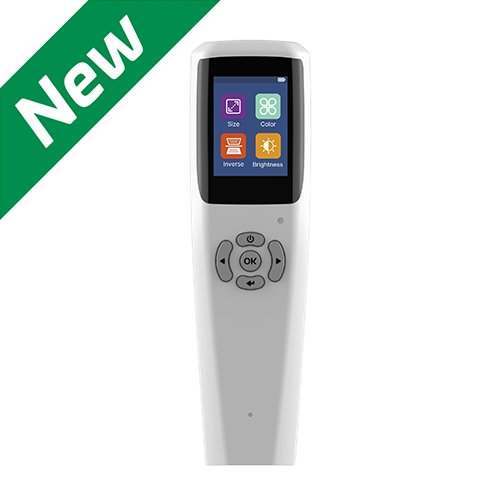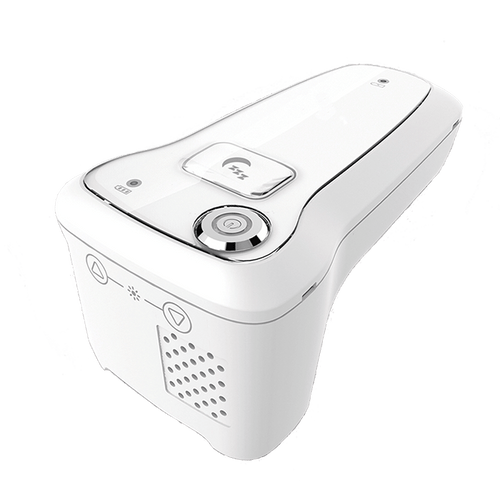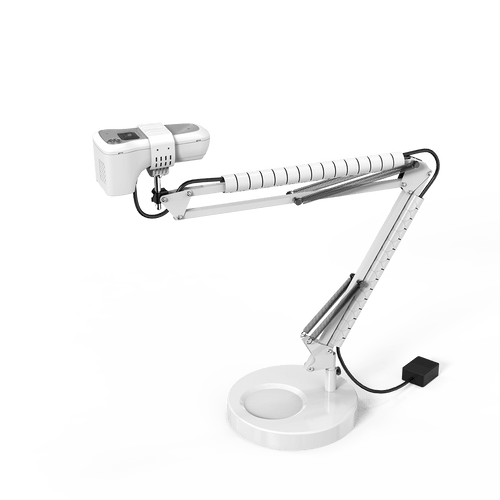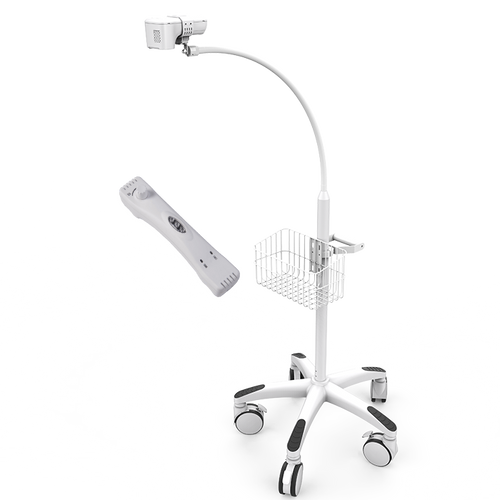Venipuncture tips: 50 Actionable Tips to Perform Venipuncture like a Pro
Venipuncture Definition
Venipuncture or drawing blood is one of the most common procedures performed in any medical center. Also, it is the basis of diagnostics. It helps us establish if there is something wrong with the body and what to look out for.
On the surface, it seems as a rudimentary procedure, one that doesn’t require any special training. However, there are numerous things that can go wrong while you draw blood. This is mainly due to the fact that different people have different biological systems which can make it harder to find and puncture the vein. Besides that, there are some additional considerations.
Without further ado, here are 50 tips that will help you perform this crucial procedure. It includes preparation of the patient, finding the right vein, insertion of the needle, disposal of waste and handling of potential hazards.
How to prepare for venipuncture
1.Get the proper training
This one goes without saying but is still something that needs to be emphasized. Like most medical procedures, phlebotomy can be really easy or really hard. It all depends on your preparation and equipment. Before you start injecting needles into people, make sure to get a proper training and get used to the entire process.
2.Get rested
Medicine is a very serious profession. In fact, most of the procedures cannot be performed if you don’t have a clear head on your shoulders. If you haven’t rested properly, this can affect your ability to perform venipuncture and can lead to critical mistakes which you, as a professional, cannot afford.
3.Be confident
Medical professional also has to be a salesman of the sort. When performing venipuncture, he needs to convince a person that he is capable of drawing blood safely. A lot of patients have the needle phobia. On top of that, there are a lot of individuals who fear (or dislike) going to a doctor. You need to overcome those fears by exuberating confidence and persuading a person that everything will be alright.
4.Explain the procedure
Next step is explaining the procedure. This helps you build trust with a patient even further. If a patient is reluctant or fearful, it can interfere with drawing blood. By explaining everything, you make sure there are no surprises ahead.
5.Check patient’s health
Before you can start, you need to ask the patient if he has any allergies to drugs. After that, you need to see if the patient has any medical condition, if he is using drugs or if he is fasting.
6.Build your own approach
In a way, you have to entertain a person during phlebotomy. Think of an anecdote or a story you would like to share. Continuous interaction can help distract a person during this time. This is especially important for babies and small children that have the natural aversion to needles. You need to keep their attention and make sure they do not notice the needle.
How to start venipuncture?
7.Patient’s position
Patient’s hand should be dangling so that the blood can rush down and fill the veins. If you are drawing blood from an arm, make sure to sit near the patient, as close as possible. If you are drawing from a leg, the extremity needs to be placed over the bed so that the blood can easily flow into it.
8.Your position
When performing venipuncture, make sure to sit whenever you can. This will give you more stability and it will relax you. You need full access to the arm so you will have to sit in front of the patient, a bit to his side.
9.Take the necessary precautions
No matter how a patient looks like, it is necessary for a medical professional to protect himself. Gloves are a must. Additional equipment such as goggles and splash shields should also be worn in extreme situations. Always start by thinking that a patient is infectious and that he can spread a disease.
10.Find the proper cannula size
It is crucial to use needle and cannula that is smaller than the patient’s vein. If you do otherwise, you are going to injure the patient. Additionally, you will have to consider the reason why you are performing insertion of the needle. Depending on whether it is for transfusion or simple blood analysis, your cannula size will vary.
11.Always target the non-dominant arm
Although this is not a necessity, it is pretty much recommended. Make sure to perform venipuncture from patient’s non-dominant arm (which is usually the left one) as it will allow him to use his dominant arm afterwards.
12.Tourniquet is not always the best option
There are numerous situations where you should refrain from using a tourniquet as a part of your equipment. For example, in a case of a patient with fragile veins, it is much better to skip a tourniquet as it may cause the vein to blow out.
13.Using a blood pressure cuff
Blood pressure cuff is a great method of extracting blood in case that the veins are not visible enough. Invert a BP cuff so that the blood can go to the lower regions of the limb. This will lead to a better compression that will properly regulate the pressure. It is the best thing for patients with low blood pressure.
14.If patient has hypovolemia
Some patients have hypovolemia or reduced volume of circulating blood. This can pose a real problem as their veins collapse quicker. If you encounter such a person, make sure to draw blood from larger veins instead of the smaller ones.
How to pick the right vein for venipuncture?
15.Take your time
This is the first and crucial rule of venipuncture. No matter what, always take your time to find just the right vein. In fact, based on this, the entire procedure can be harder or easier.
16.Use your hands
Do not be afraid to touch your patient. Sometimes, you may see a tendon thinking that it is a vein. The only way to make sure is by touching it yourself.
17.Making the proper assessment
Frail veins can pose a great problem when drawing blood. Make sure to find a vein that is properly hydrated. They will be much easier to spot and throbbing.
18.Start from distal veins
Always try to draw blood from veins that are lowest. Afterward, you can easily go upwards.
19.Avoid certain areas
Always avoid drawing blood from areas where the skin is damaged, inflamed, infected or burned. Scar tissue can especially be problematic as it is hard to penetrate. The region from which you are drawing blood has to have a healthy tissue.
20.Ask the patient
Even with all these guidelines, perhaps the best approach is if you ask the patient from which vein they usually draw his blood. This can be a real time saver and it is also the best way of finding the right insertion point. In the end, if other medical experts managed to draw blood from a particular vein, you can do the exact same thing.
How to make the vein more visible when performing venipuncture?
21.Do not slap the vein
Although this is something you might’ve seen a lot in the movies, you should always avoid it. Slapping can lead to contraction which can further decrease the veins, producing an adverse result.
22.Put a warm towel
By placing a warm towel over the veins, you are increasing the blood vessels which will make them more visible. Make sure you have one in your venipuncture equipment.
23.Avoid fist pumping
Pumping fists can lead to pseudohyperkalemia or increased level of potassium in the blood. Doctors usually mistake if for hyperkalemia when assessing the results. Although this is a benign, temporary effect, it can be quite misleading and can lead to the bad diagnosis.
24.Stroking the veins
Instead of forcefully tapping the vein, it is much better if you start stroking them. A medical expert should stroke them from distal to the proximal vein. As a result, this will lead to the release of histamine increasing the vein.
25.Multiple tourniquets
It is also possible to apply multiple tourniquets. They should be spread distally from proximal joint to the insertion site.
26.Use nitroglycerine
Nitroglycerine is yet another substance that can help you out during phlebotomy. It will easily increase the smaller veins. Word of caution: make sure to remove the substance before rubbing the vein with alcohol.
27.Bending the arm
Sometimes, it can still be hard to find the vein after applying the tourniquet. If that is the case, the patient should bend arm upwards which will make the vein more visible.
28.Use vein finder
Nowadays, there is equipment that can help us locate the vein. With vein locators, you can see where all the veins are. Be careful, though. Contact should be limited and you shouldn’t place the locator on burned skin.
How to draw blood?
29.Inserting the needle
You need to have a firm, strong grip on patient’s hand. With thumb, spread the skin. Insertion point should be under 15 to 30 degrees angle. While doing all of this, make sure to penetrate the skin with one quick move. Avoid excessive probing.
30.Watch your fingers
While holding patient’s arm, make sure that your finger is well above the insertion point. In certain cases, the patient may move a bit which may result in you sticking the needle in your own finger.
31.Confusing the nerves
You are able to confuse the nerves before the insertion. If you are a bit stiffer while rubbing the alcohol, it will prepare the hand for the procedure. Also, you can gently press the needle against the venipuncture site for several seconds before insertion so that the nerves can get accustomed.
32.Minimizing the pain
If all else fails, you can always use drugs. The person performing venipuncture can administer 10 units of bacteriostatic saline which need to be injected intradermally. However, you will need a doctor’s permission for this.
33.Place bevel up
The bevel of the needle should go upwards. It is the sharpest part and this will be the best way of insertion.
34.Make sure there is no resistance
You need to make sure there is no resistance whatsoever. Otherwise, it may indicate that you have missed which is when you should immediately back up.
35.Using the tubes
There are various reasons to perform a phlebotomy. When drawing blood, you will need several tubes for different samples in your equipment. They need to be labeled in advance. Place them one by one in the holder and take samples. When the last one is done, you need to remove the tourniquet. Afterward, make sure to store them properly.
36.Leave the tubes in holder
There is a nice way to fill the tubes faster. Before and after the insertion, the tube should be left in the holder. It needs to remain loose. This will fill them up much quicker which is a great way to finish procedure faster if you have a troublesome patient.
37.Avoid mess
If a person doesn’t have enough experience, he might make a mistake by not removing the tourniquet before the needle. This will cause a lot of mess. Instead, make sure to remove tourniquet first and then remove the needle followed by instant pressure on the insertion point.
38.Removing the needle
Similarly to insertion, removal of the needle should also be swift and efficient. Do it by performing a quick backward motion.
39.Use gauze
Once you remove the needle, gauze should be applied for a bit. It will stop the bleeding and prevent the creation of hematoma. Make sure not to press too hard! Also, avoid cotton as fibers may stay in the wound and reopen it later on.
40.Disposal of waste
Throw everything in proper containers. Make sure that no one gets directly exposed to blood.
What are additional things I have to know about venipuncture?
41.Preventing hematoma
In order to prevent hematoma, you should only puncture the uppermost wall. The needle should fully penetrate it. Make sure that tourniquet is removed before the needle. Only major veins should be used here. After that, pressure needs to be applied on insertion point.
42.Indwelling lines or catheters
This is the main reason why a lot of tests go array. In order to reduce the risk of thrombosis, lines need to be flushed with a solution of heap in.
43.Prevention of hemolysis
Hemolysis is one of the most common things that interfere with the tests. In order to prevent it, professional will have to avoid phlebotomy from a hematoma and to avoid drawing plunger forcefully. Lastly, you will have to mix tubes with an anticoagulant.
44.Hemoconcentration
Sometimes, the patient may experience hemoconcentration. This represents the massive concentration of certain molecules in the blood. Usually, it happens due to squeezing or massaging around the site or due to prolonged application of the tourniquet. Occasionally, it can also be caused by the longer term IV therapy.
45.Treating elderly
As you get older, most of you systems tend to shrink and they become more fragile. Same goes with veins. In the case of elderly patients, make sure to use smaller needles and to be extra gentle.
46.Treating obese patients
Increased body mass can also lead to issues during venipuncture. If a person is overweight, it might be harder for a professional to find the vein. You can try several approaches mentioned earlier in our venipuncture guidelines that will increase the vein. If nothing works, try with vein locator.
47.Treating patients with darker skin complexion
On average, it is much harder to find veins in people with darker skin tone. When you encounter such a case, make sure to use blood pressure cuff or try one of the other tricks we shared in our guidelines.
48.Try to avoid restraints
As we mentioned, it is your duty as a medical professional to ensure the patient that everything will be ok. In the case of children or uncooperative individuals, restraints are an option but they should be avoided at all costs. In the end, they can only lead to injuries. During phlebotomy, the doctor is the one that needs to ensure everything goes well.
49.Call for help if needed
Patient’s health is your priority. If you have an issue finding the vein, do not hesitate and call for a senior, more proficient colleague. The worst thing you can do is to continue stabbing the patient.
50.No blood from vein
If you are certain that you’ve hit a vein and there is still no blood coming from it, this is an indication that you have hit a necrotic vein.
There are numerous considerations when performing venipuncture or phlebotomy. The medical expert needs a certain amount of practice as there are many things that can go wrong.
Besides proper knowledge, you will also have to have a good head on your shoulders and to make sure you follow these venipuncture guidelines closely. Your approach is something that can vastly affect the patient, making the whole experience more or less enjoyable.
Hopefully, these 50 tips will help you establish what is ok and what is not.






